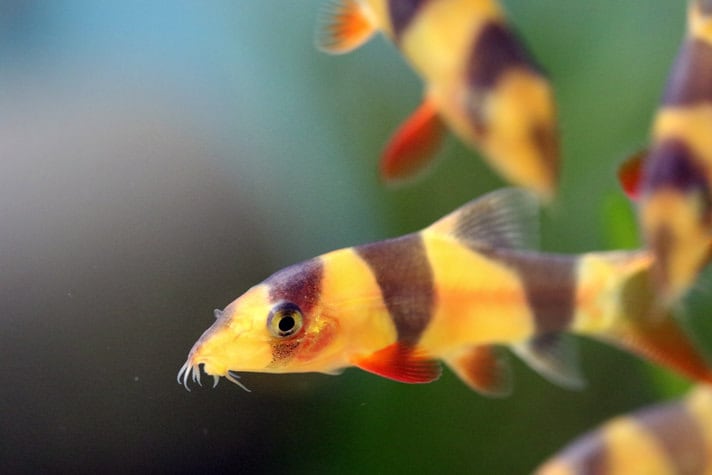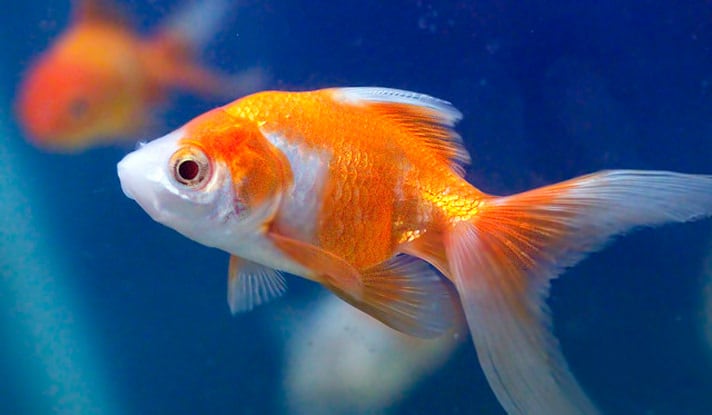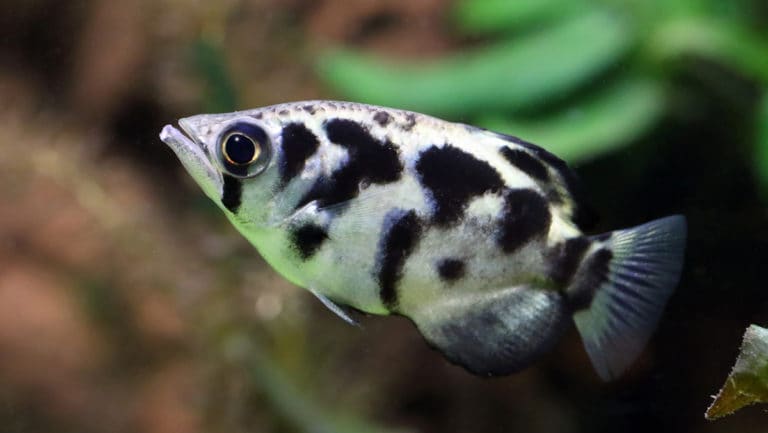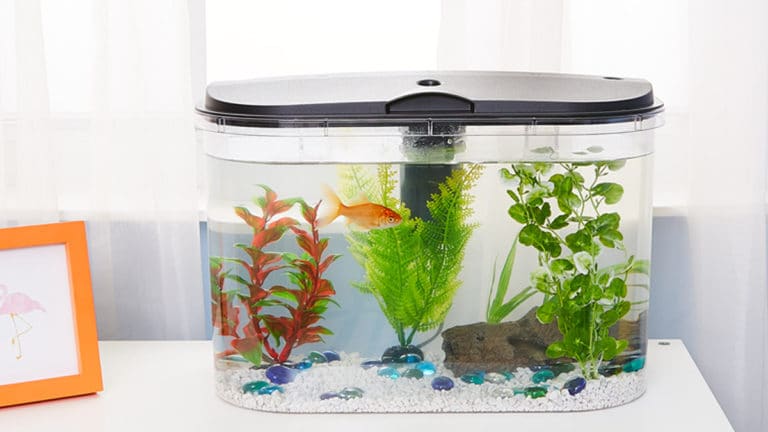Besides being one of the most beautiful fish that we keep in freshwater, clown loaches also have a number of interesting behaviors. In fact, their common name “clown” not only refers to their coloration, but also to the fact that they behave in a number of clown-like ways in a tank.
Hiding
If you have a good-sized place for them to hide, such as a cave, some driftwood with a hole in it, or even some pieces of PVC, you will observe your fish acting like clowns in a circus all crowding into one small car. They will jockey with each other for position and constantly shift around together. Another typical behavior for clown loaches is to swim around the side of a tank in endless circles. If you watch them carefully, you will see that they always maintain the same order as they circle.
Playing Dead
Another behavior that clown loaches engage in, which has often scared clown loach keepers, is how they “play dead.” This is simply the way that clown loaches sleep or rest, on their side, remaining pretty much motionless. Since fish don’t have eyelids, it can be difficult to tell if the clown loach is all right — but don’t try to “wake it up” by banging on the glass. That will just scare everyone in the tank. If you look carefully you will see the fish’s gills moving, and if you drop in a bit of fish food it will usually wake it up.
Chasing Snails
When it comes to feeding, clown loaches will each just about anything, but they are especially fond of snails. It is really interesting to watch their behavior when dealing with snails. If the tank does not already have a population of snails that the clown loaches are controlling, you can drop in a couple of common pond snails or ramshorn snails. It will usually take a few minutes for the clown loaches to find the snails, but once they discover them, the chase is on. They will keep rolling the snail over, pinning it to the corner of the tank, to a piece of rock or driftwood. Then they will begin working on the opening until they manage to pry the snail out of its shell. If you have a tank with an overpopulation of snails, a school of clown loaches will quickly bring things under control.
Part of the Group
Clown loaches are undemanding fish, in that they can adapt to a wide range of pH and hardness levels, and they will eat just about anything. The one thing that is important is that they need to be in groups of their own species — five would be the minimum and eight or nine is ideal. Since they get fairly large, a large tank is needed for them as they mature. A school of clown loaches will really live up to their comical name, providing hours of interesting observation of their behavior on the part of the hobbyist.
Posted by: Chewy Editorial
Feature Image: Via The Reptilarium/Flickr
Share:









